"I place the greatest importance on the content"- B R Chopra
Can you tell us, generally speaking, what yardstick you apply while selecting a subject to film? Is there one criterion or several?
As there is no mathematics involved in the selection of a subject, it is only a personal attitude, difficult to describe. What really matters to me is how far the subject is “different," how far its approach is new. It must be essentially engrossing, as without this quality no story is worth considering. Additionally, I try to see if there is a purpose to the story which is able to give a dimension to it -but this is not a "must." A subject with a difference and holding promise for good cinema could be all right.
One thing I definitely do not bother about whether it has box office or not, because I do not know what is box-office. To me a good subject is the only box office.
Is it true that you have, at all times, at least three to four subjects ready for filming?
Alas, no. How I wish I could have a stock in hand, particularly when we have two separate units of production. In fact, both Yash and I feel unhappy in our periods of idleness! I hope you know we alternate but the paucity of good subjects handicap us. Thus, though we like to remain busy all the time, we are still not able to pile up any stock. Like most other Indian producers we also live from picture to picture. Not good business, but that is that!
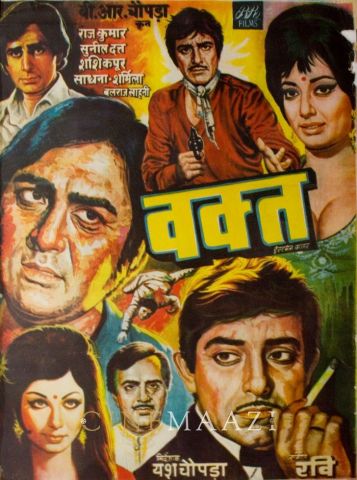
What emphasis do you put on the form content ratio? I am speaking of your own films in particular.
I place the greatest importance on the content. Form has to be decided by the story itself, and there could be no mathematical ratio. But unfortunately for us, with the advent of colour, form has been demanding more and more emphasis, and we also could not avoid the temptation! The lavish sets of Waqt (1965) and Hamraaz (1967) were perhaps not entirely justified, but the attraction of colour for its own sake has been forcing producers to go out of their way to invest pictures with greater opulence and ornamentation because colour has become synonymous with box-office. Yet we do try to see that in spite of the lavish colour and opulent sets, our content does not get lost in the form. Subject and story content must at all times remain supreme that is what we strive for, that is what we believe in.
Is it true that every good director has a distinctive style? If so, can you explain to our readers how you would describe your own "style" In film making?
This is putting me in the wrong box. You should have asked this question of the critics or the picture goers who debate on the style of different directors. The director himself cannot tell you about his style. At least I can't because I wonder if I have any style. I try to make a story as sincerely as possible and from Ek Hi Rasta (1956) and Naya Daur (1957) to Kanoon (1960), Gumrah (1963), Waqt and Hamraaz we have tried a wide range of styles.
According to me, every story indicates its own style and what comes first is the story and not the style. There may be some who have perfected their style of making movies and gear their subjects to their style. Even at the risk of sounding pedestrian I say that I have no set style nor do I believe in it. The style of a director has to change from subject to subject and it is really dangerous for a director to get typed. And don't quote me exceptions like Hitchcock and Charlie Chaplin. I am talking of the normal directors and not geniuses.

Further to the above, how far is it true that every different subject has its own style of telling inherent in it?
Again it will be difficult for me to blow my own trumpet. A person who took to direction in frustration and even without going through the paces of technical assistance could have had no time to start with any style. When my first picture Afsana (1951) clicked I thought, and I say rightly, it was due entirely to a good story well scripted. Thereafter my emphasis has been on story-content. Therefore if you have followed my pictures you will, I am sure, find no set style.
To my mind, a style is possible only if a director sets himself to do one type of pictures like Hitchcock. My style, therefore, manifests itself in its absence.
As a leading filmmaker how can you justify your invariable use of leading stars only in all the films you make? Is it true that this is so because they work for you "cheaper" than they do for others?
Left to myself I would only pocket the compliment of a "leading filmmaker," and not answer the other part of the question! But I must erase a misunderstanding. It is true that stars are very friendly with me and they have also been kind to me. But there is another reason why I prefer stars in my movies. If you will glance over the pictures I have made, you will find that they were always complex subjects demanding a high standard of histrionics for the proper projection of the roles. For example in Ek Hi Rasta the role of Meena Kumari was so complex that a lesser artiste could not do justice to it. The role of Ashok Kumar again, had dimensions of psychological delineation which needed a competent and mature actor. We did take the then comparative newcomer, Sunil Dutt and you will find that we were able to get him a real good break. When we conceived "Naya Daur" we could think of none other than Dilip to do the tonga-wala's role and though in the beginning Dilip did not show much enthusiasm for it, we stuck to him tenaciously and ultimately persuaded him to do the role to which, according to me, he alone could do justice. Again could you imagine a new talent or a less mature artiste in place of Ashok Kumar in Kanoon? Raaj Kumar in Waqt again proved that we made the correct choice for a role which needed a many-dimensioned actor.
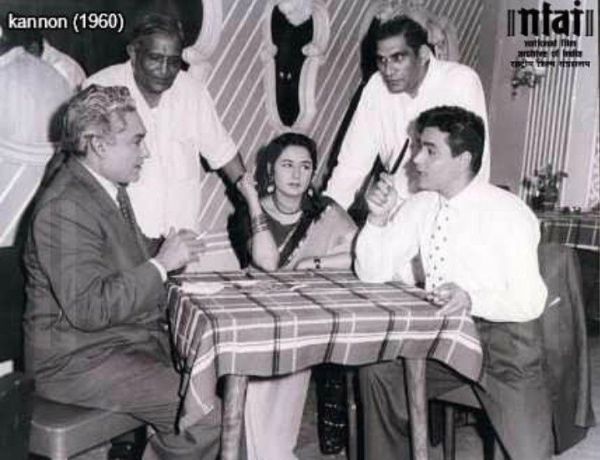
We are not allergic to new talent either, and here I will not cite Vimi because that just about sums up an adventure in the field of scouting, but I have so many good old friends ready to help me that I don't feel like going out of this orbit.
But do give me the credit for bringing in a host of child stars.
Do you contemplate at any time the making of a major film with an all-new star cast? As a member of the United Producers, you have been associated with several "new find" contests. Surely you must have found some worthwhile talent in this?
Who could tell about the future? I can make no promises either to you or to myself. If I find that a completely new cast will be able to do justice to a subject, the mere "new" will not be any handicap. The main thing is the picture and that admits of no inhibitions.
Yes, United Producers have so far conducted three contests in collaboration with a movie magazine. Though we did get a couple of promising young actors, I am not quite happy with either their turnout or their histrionic ability generally speaking.
Can you concisely explain the basic problems of the film industry, and what solutions you have to offer for them?
The basic problem of the film industry is the over-populated production sector. We are too many, which invariably minimises our strength. Every producer is an individual and as all his stakes are on the single picture in which he is engaged he has to load it with all that goes in the name of the box-office. Which ultimately makes him dependent upon everybody and everything.
Production in the very nature of things has inbuilt weaknesses, and the preponderance of demand over supply of box-office "commodities" makes it still more weak, almost limp.
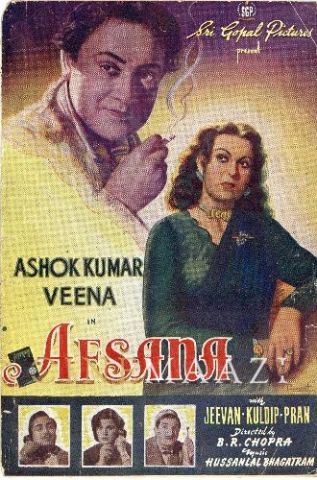
What themes do you propose to tackle in the next two-three years of film making?
My next picture is based on the theme of linguistic states and I hope to start it soon. I have no other story in hand and I cannot foretell what I will get in the next two or three years.
It is true that many quite important producers "drag" their film to artificial "Silver Jubilee," especially in Bombay. What precise reasons are there for this? What specific benefits accrue to the producer from this practice?
In a business which is so individualistic and where the be-all and end-all of a producer depends entirely on the image created by a single picture, the Silver Jubilee mark gains significance. To a producer whose picture has shaped well at the box-office a little more of expense by way of contribution to the run of the film does not hurt. On the contrary, it can get him a distinction which does benefit him in the circuit, where the jubilee run does mean a sales argument. There was a time when big producers thought it good publicity for their picture, if they did not allow the picture goers to get the tickets at the window in the first few weeks. In the case of a good picture, it did create a demand for the picture, and the filling of the house by "studio audience" paid dividends.
I do not hold any brief for "dragging", and, in the name of business ethics and easing the over-crowding at the box-office, it should not be done. But business after all does not follow the rules of law and of ethics. It is a profession where the producer stands all alone and where success is rare. All he can do is to think of his own interests and not of the community, which does not stand by him at the time of his need. Moreover, he feels that on merits his picture would have anyway touched the Silver Jubilee mark if the terms of the exhibition were rational.
Have you any plans to set up a studio of your own? If so, in which state of India do you contemplate to set it up?
That has remained an unfulfilled ambition of mine. I am looking forward to the promised Film City in Bombay and though the Government of Maharashtra is rather tardy, I am sure they will ultimately do it. Only I wish it is not too late for them, as the exodus (in utter frustration) from this premier production center is too fast and, whereas every other state is offering enticing terms, the high-ups in Bombay are taking it easy.
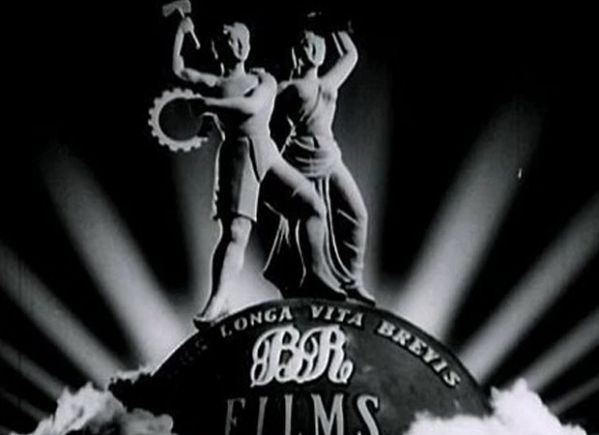
How would you explain the total dearth of thought content and theme content in the Hindi films of today? A section of filmmakers pleads that censorship is too restrictive, though I personally do not believe this is the whole truth. How far do you believe that the I.Q. of the Hindi film generally reflects the I.Q. of their makers? Please answer frankly.
I do not agree with you that there is a total dearth of thought-content and theme-content in the Hindi films. Even to the point of sounding presumptuous, I think that though the majority of movies are inconsequential, we do have some pictures with good themes- I do include my pictures which are always geared to some purpose or the other.
Generally speaking, however, what we churn out in the name of Hindi films is not very complimentary. The reason for this is contained in the answers given above. Additionally, I would say that we are suffering from a fear-complex -fear of going out of business. These days the cost of production has become abnormally high, and as the existence of a producer depends entirely on the safety of his single picture project, he decides to play safe. He loads the picture with all that stands for box-office and ultimately discovers himself the slave to his picture, not its master. Under the weight of all these "stars" the story-content gets crushed. The producer has no time to venture into new pastures of human experience. He takes the short-cut to success by mixing his ingredients according to the Formula and feels content with the under production sales which leave him with a margin of profit.
I do not believe in the myth that the Censors are in any way responsible for the deterioration in the quality of our movies. I would believe it if we had a number of banned or rejected pictures of extraordinary merit.
This article was originally published in Star & Style magazine. Images for the feature have been taken from the Cinemaazi archive and the internet.






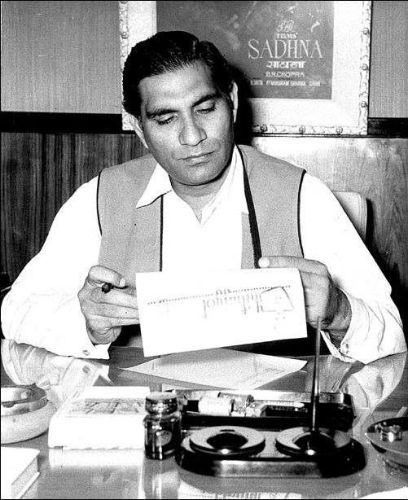

.jpg)


